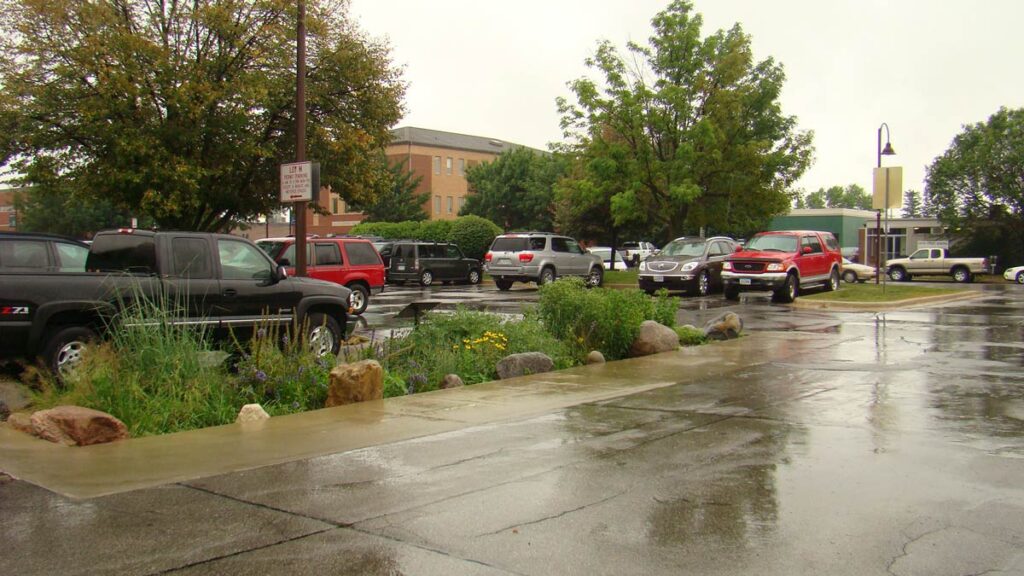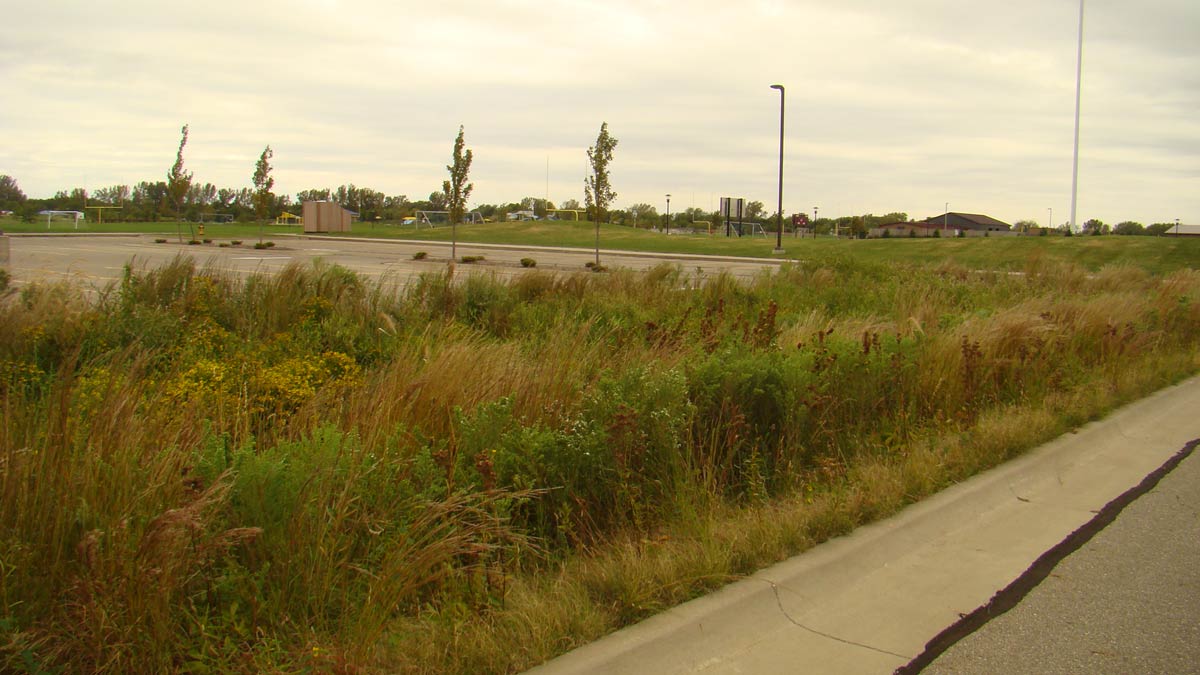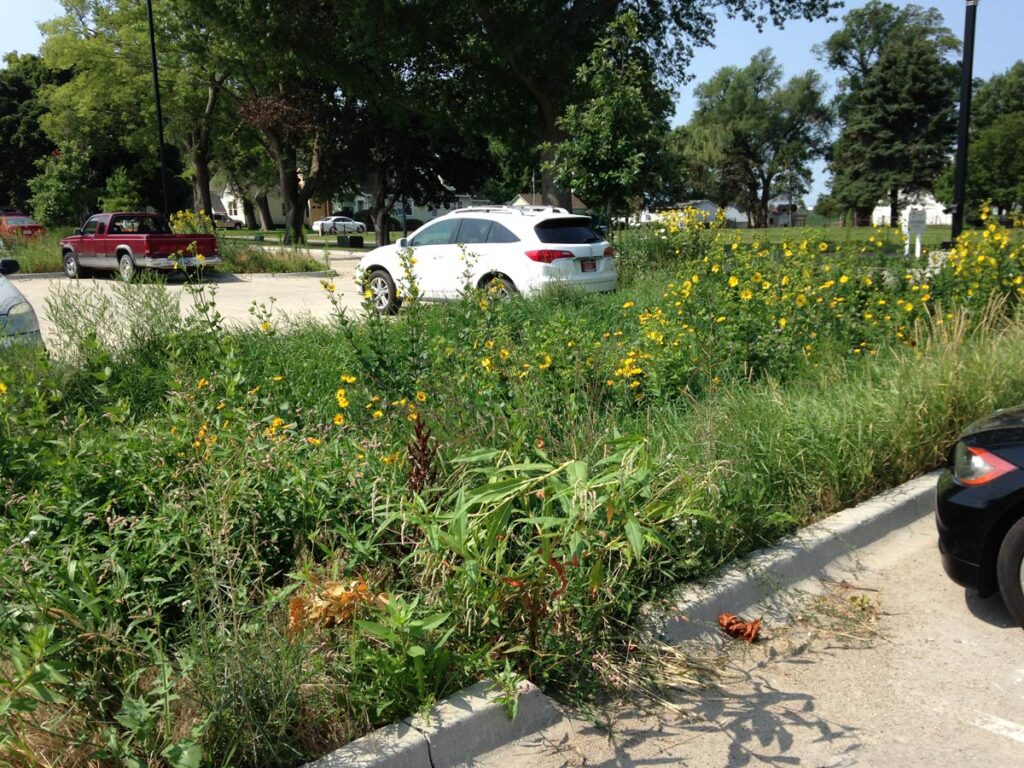Bioretention cells are engineered landscape depressions that capture, filter, and infiltrate stormwater runoff from impervious surfaces like roofs, driveways, and parking lots. These versatile stormwater management features can be incorporated into most settings, including commercial, residential, and municipal areas. Bioretention cells are particularly valuable in locations where existing soils don’t adequately drain, as they include carefully designed layers that enhance infiltration and pollutant removal. With their attractive plantings and natural appearance, bioretention cells not only manage stormwater but also enhance the landscape’s aesthetic appeal while creating valuable habitat for pollinators and birds.
Key components
Inlets: Multiple entry points such as curb cuts, gutter inlets, and street inlets with pre-treatment sumps can be used to allow stormwater to enter while capturing initial sediment and debris.
Vegetation: Native plants with deep roots that can tolerate both wet and dry conditions protect the soil, absorb water and nutrients, and enhance biodiversity.
Mulch layer: Shredded hardwood mulch (2-3″ thick) prevents erosion, suppresses weeds, retains moisture, and provides initial filtration.
Modified soil layer: A specialized mixture of sand, topsoil, and compost (18-30″ thick) filters pollutants and supports healthy plant growth.
Choker layer: Small stone aggregate (3/8″ chip, 2″ thick) prevents soil media from migrating into the drainage layer below.
Stone aggregate base: Larger stones at the bottom provide structural support and water storage.
Overflow: Standpipe with perforated subdrain ensures a maximum ponding depth of 6-9″ and safely conveys excess water during heavy rainfall events.



